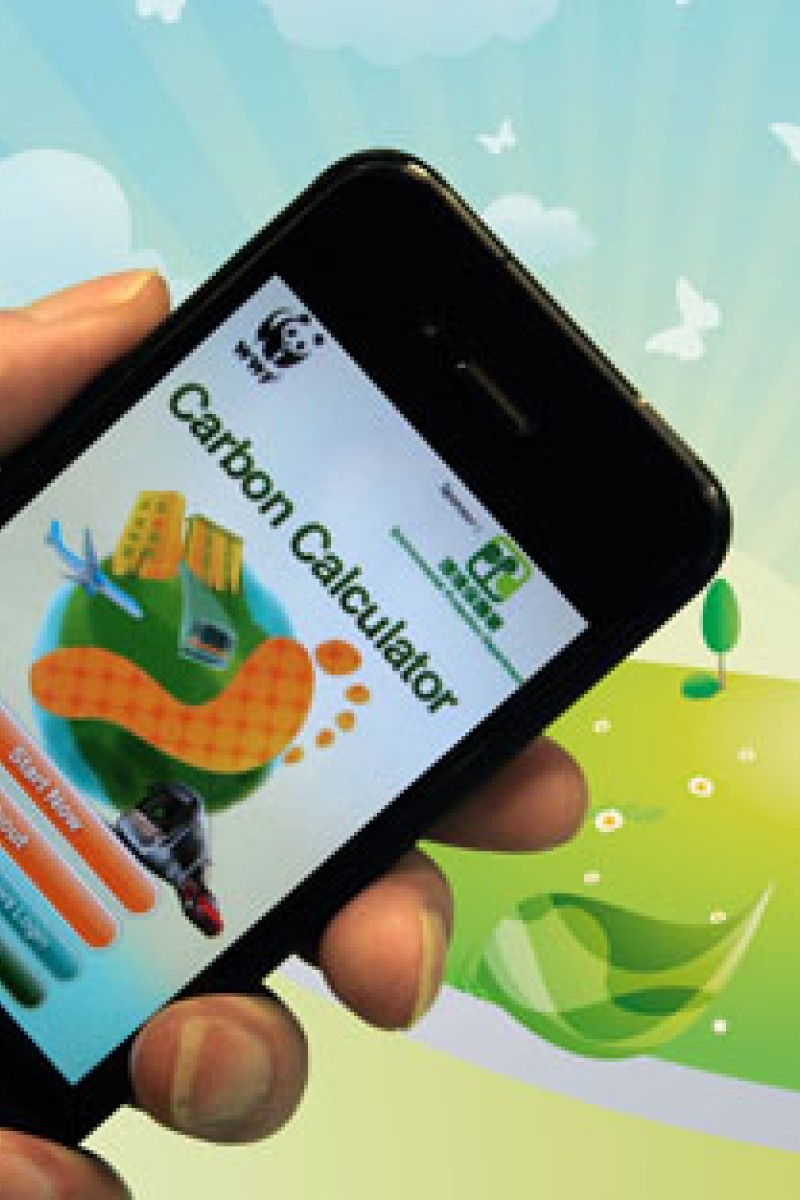
Instead, the global conservation body WWF has been reaching out to teens through edgier means: iPhone apps, Facebook pages and interactive elements on its website.
Patrick Ho Ho-yin, public engagement leader of WWF Hong Kong's Climate Team, says the idea of taking the initiative to a whole new level on the internet started in 2007. The group spent around HK$200,000 and half of that year to invent a tool that let people calculate their own carbon emission.
The organisation made it available on the Net and thousands of people have used it.
Earlier this month, WWF turned the tool into an application for smartphones. Users can simply answer a few questions and find out the amount of carbon emissions they generate in a year.
"A lot of people use iPhones these days, and an app is one way to engage them," Ho says. Being environmentally conscious, he adds, "can be chic and cool".
Besides being edgy, the carbon emission calculator lets WWF collect data for its own analysis. When users finish calculating their carbon emissions, their data are transferred to WWF's database. Based on a sample of 6,000 users, the organisation discovered that a Hong Kong citizen generates 13.4 tonnes of carbon emissions a year.
The use of air traffic accounts for 55 per cent of that, with local transportation adding a further 13 per cent. "The data allow us to make suggestions to the government and formulate campaigns," Ho says.
WWF's website also features an interactive map that shows threats to Chinese white dolphins caused by the proposed construction of a third runway at Chek Lap Kok airport. Then there is a virtual tour of Mai Po which lets users appreciate the beauty of the reserve through videos, audios and photos.
The conservation group also has a Facebook page, where it posts information regularly.
Ho says the only drawback is that developing such tools costs a lot of time and money. Coming up with a plan to market them is important as well, he says. WWF usually invites celebrities like DJ Sammy Leung Chi-kin to act as its ambassadors.
Many teens, like 17-year-old Darren So Tsu-hei, love the tools.
"It is definitely way better than the conventional methods," he says. "People will usually just glance at posters and ignore the important messages on them. But by using this kind of interactive interface, internet users can explore the information in a more interesting way."
But another teen, Griffith Cheng Ho-fung, 16, cautions that conventional promotion methods such as posters and commercials should not be neglected.
"Those [conventional tools] are clear, simple and catchy," he says. "I would say that an interactive tool works only with teens who are already aware of [green issues] and are motivated enough to visit [WWF's] site."
